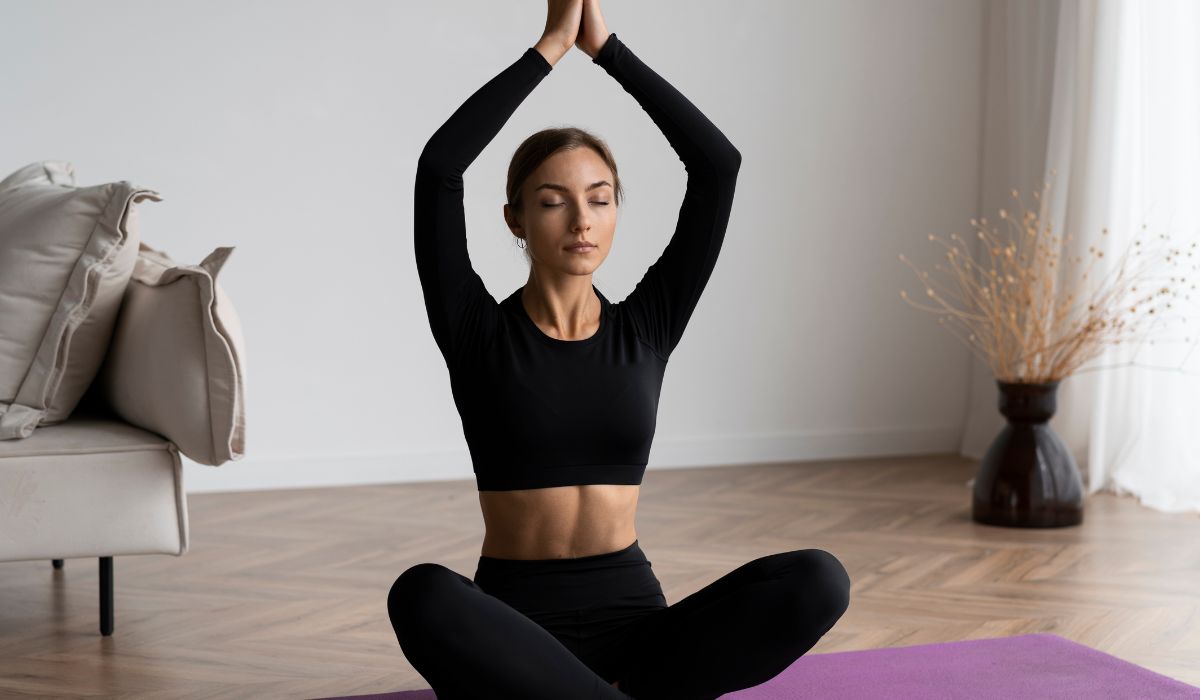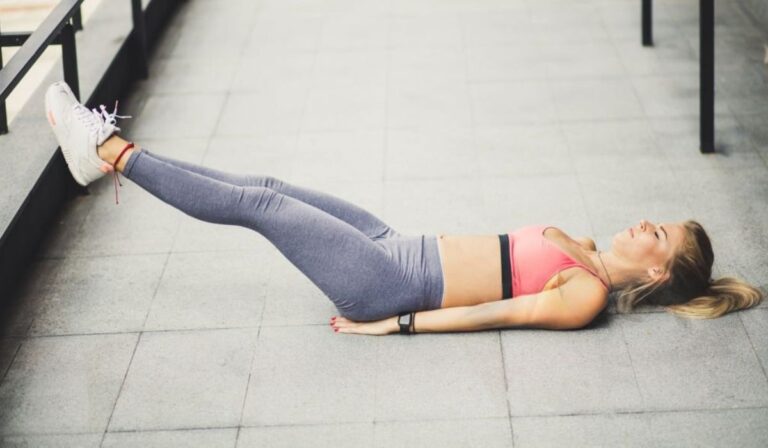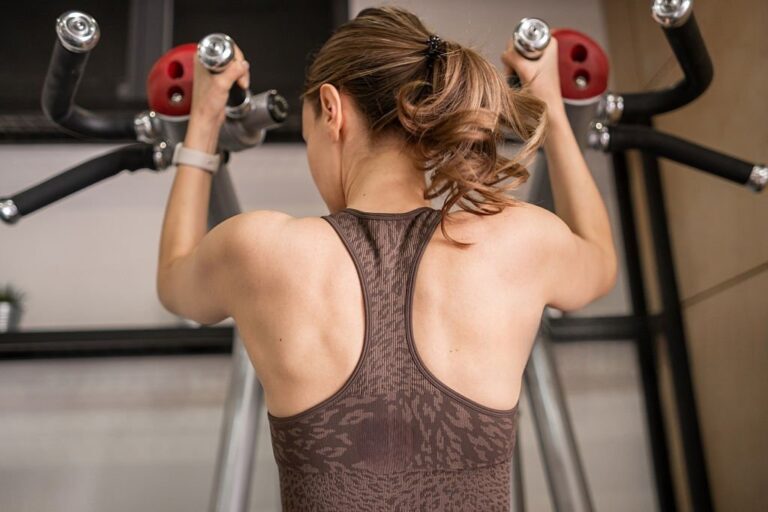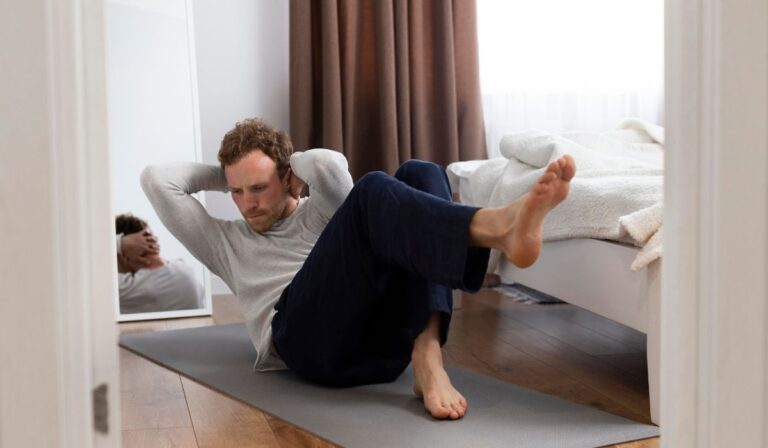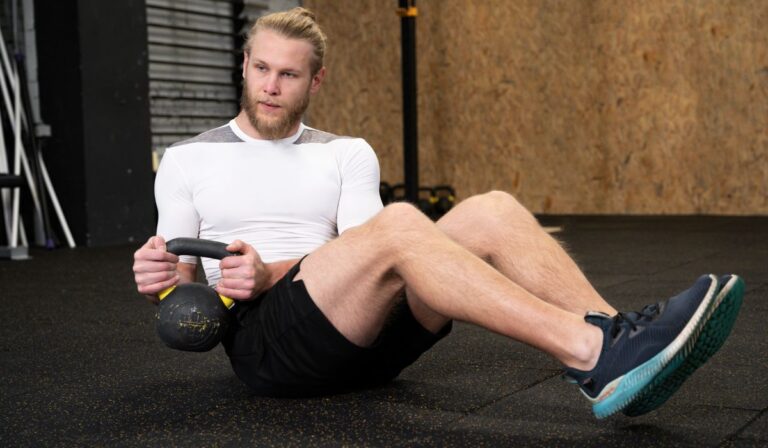6 Yoga Poses for Menstrual Health – How They Help and Why You Should Try Them
Menstrual health is about much more than simply managing monthly bleeding. Many women experience symptoms like painful cramps, irregular periods, PMS mood swings, bloating, or even conditions like PCOS (Polycystic Ovary Syndrome). While medical care is essential for diagnosing and treating underlying conditions, yoga offers a holistic approach that can support better menstrual health naturally.
Yoga helps regulate hormones, ease stress, improve pelvic blood flow, and calm the mind. Below are six yoga poses especially beneficial for menstrual health, plus why they work.
1. Supta Baddha Konasana (Reclining Bound Angle Pose)
This gentle, restorative pose is great for relaxing the lower belly and pelvic area. By lying back with the soles of the feet together and knees falling open, you encourage better blood circulation to the ovaries and uterus.
Benefits:
- Reduces cramps
- Improves blood flow to reproductive organs
- Promotes relaxation and stress relief
It’s ideal for days when you want to rest deeply and soothe menstrual discomfort.
2. Setu Bandhasana (Bridge Pose)
Bridge Pose is more active, but still accessible for most people. Lifting the hips while keeping the feet grounded helps tone the pelvic floor and stimulate the thyroid gland, a key player in hormonal balance.
Benefits:
- Strengthens pelvic muscles
- Supports thyroid function
- Relieves mild lower back pain
Bridge Pose can be energizing during the follicular or ovulatory phases of your cycle.
3. Malasana (Garland Pose)
Also called the yogic squat, Malasana opens the hips and pelvis deeply. It stretches the lower back and helps with digestive health—often an issue during menstruation.
Benefits:
- Enhances pelvic flexibility
- Reduces lower back tension
- Supports healthy digestion
Malasana can also help release emotional tension stored in the hips.
4. Paschimottanasana (Seated Forward Bend)
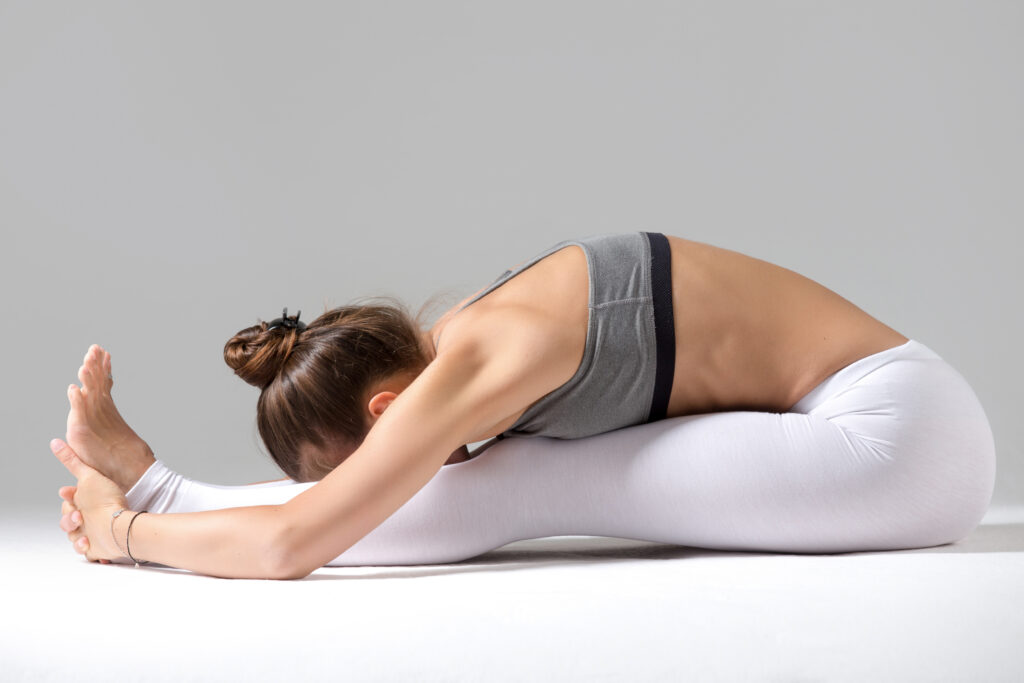
This calming forward fold helps soothe both body and mind. It stretches the entire back of the body and can ease bloating or abdominal discomfort associated with PMS.
Benefits:
- Calms the nervous system
- Eases anxiety and mood swings
- Supports digestive function
Practicing it slowly with deep breathing can also promote mental clarity.
5. Viparita Karani (Legs Up the Wall Pose)
A classic restorative pose, Viparita Karani involves lying on your back with your legs resting vertically on a wall. It’s known for activating the body’s relaxation response.
Benefits:
- Reduces pelvic congestion and inflammation
- Calms the parasympathetic nervous system
- Lowers cortisol (the stress hormone)
This pose is perfect for winding down before bed or for deep rest during your period.
6. Balasana (Child’s Pose)
Child’s Pose is perhaps one of the most soothing yoga poses for menstrual health. Folding forward with the knees apart and forehead on the mat helps relieve abdominal and lower back cramps.
Benefits:
- Relieves cramps and back pain
- Promotes pelvic blood flow
- Calms the mind and reduces anxiety
It’s excellent during the luteal and menstrual phases when your body craves rest.
The Role of Breathwork in Menstrual Health
Yoga isn’t just about physical postures. Breathing exercises (pranayama) help manage stress, a major factor in hormonal imbalances. Chronic stress can disrupt your cycle by increasing cortisol, which can interfere with reproductive hormones.
Simple techniques like Bhramari (humming bee breath) have been shown to reduce cortisol levels and help regulate menstrual cycles over time.
Benefits of regular breathwork:
- Reduces anxiety
- Lowers stress hormones
- Supports hormonal balance
How to Build a Yoga Routine for Menstrual Health
Yoga works best as a consistent practice. Consider this approach:
- Follicular/Ovulatory phases: Include dynamic poses like Bridge and Malasana to energize.
- Luteal/Menstrual phases: Focus on restorative poses like Child’s Pose, Reclining Bound Angle, and Legs Up the Wall.
- Breathwork: Practice pranayama daily, even for just 5–10 minutes.
By tuning your practice to your cycle, you support natural rhythms and cultivate body awareness.
Final Thoughts
Yoga is not a cure-all, and medical care remains essential for diagnosing and managing conditions like PCOS or severe menstrual pain. But when used alongside medical guidance, yoga can be a powerful tool for menstrual health.
It’s more than exercise—it’s a way to listen to your body, manage stress, and support overall well-being throughout your reproductive years.
If you’re new to yoga, consider starting slowly, listening to your body, and seeking guidance from a qualified instructor, especially if you have any health conditions.

